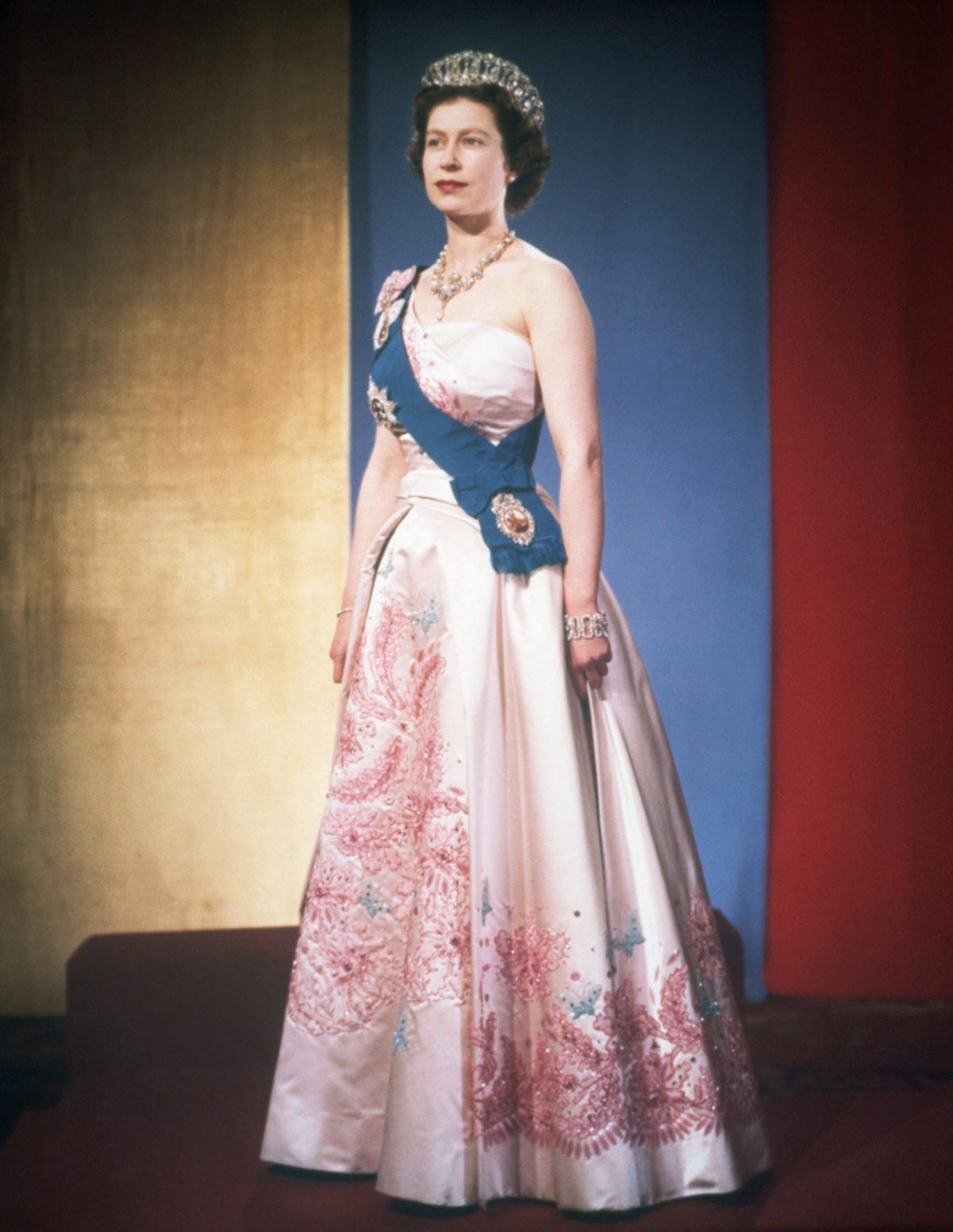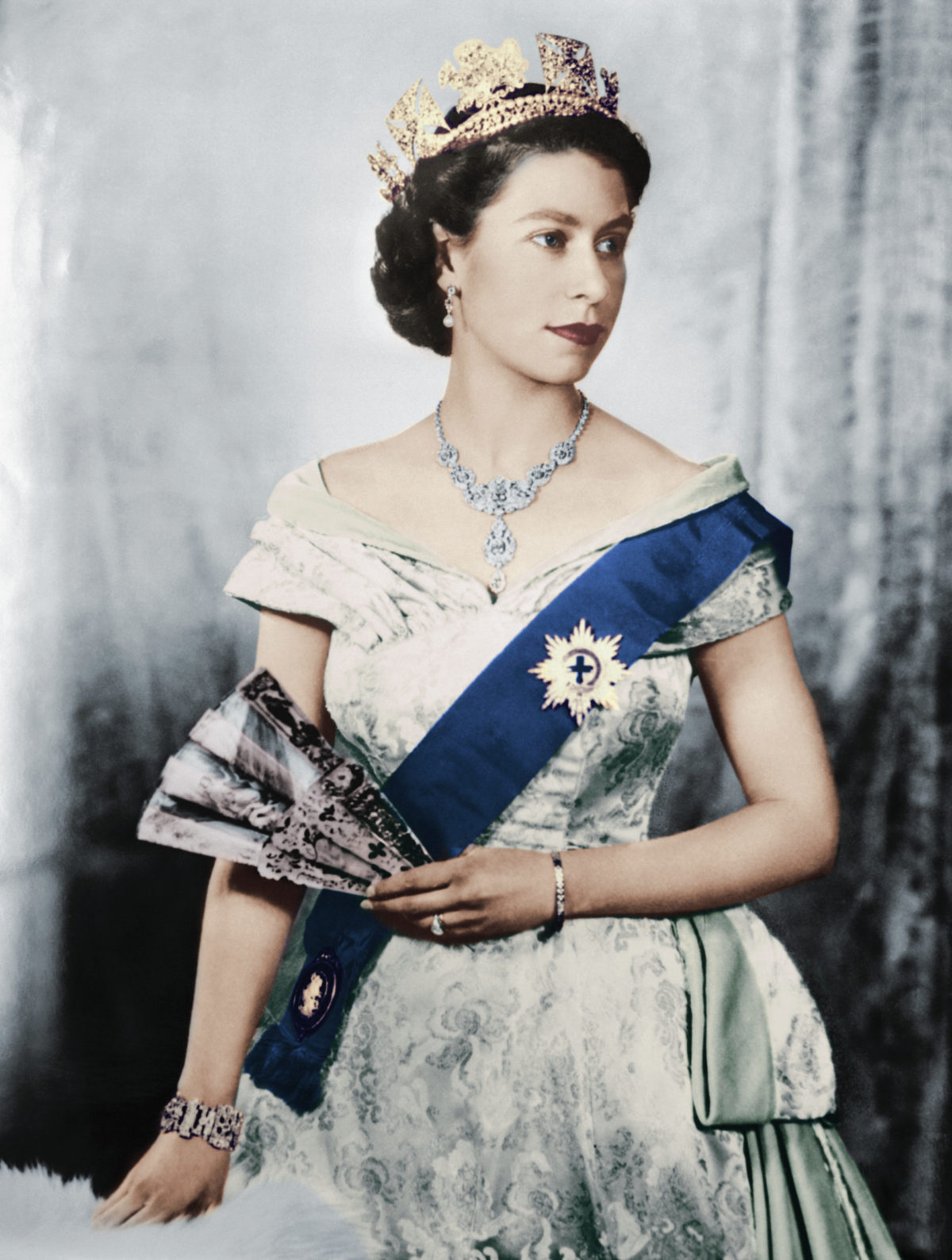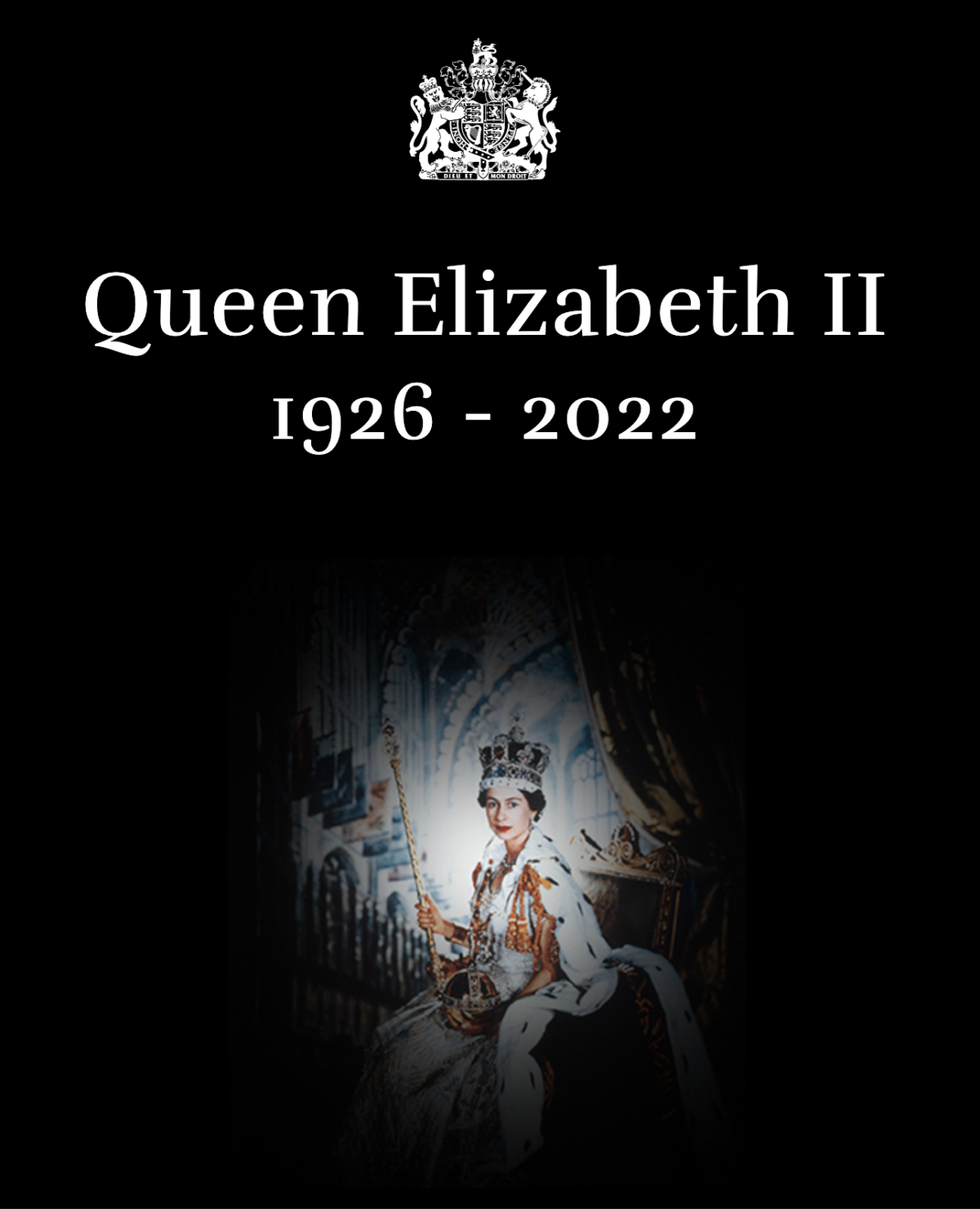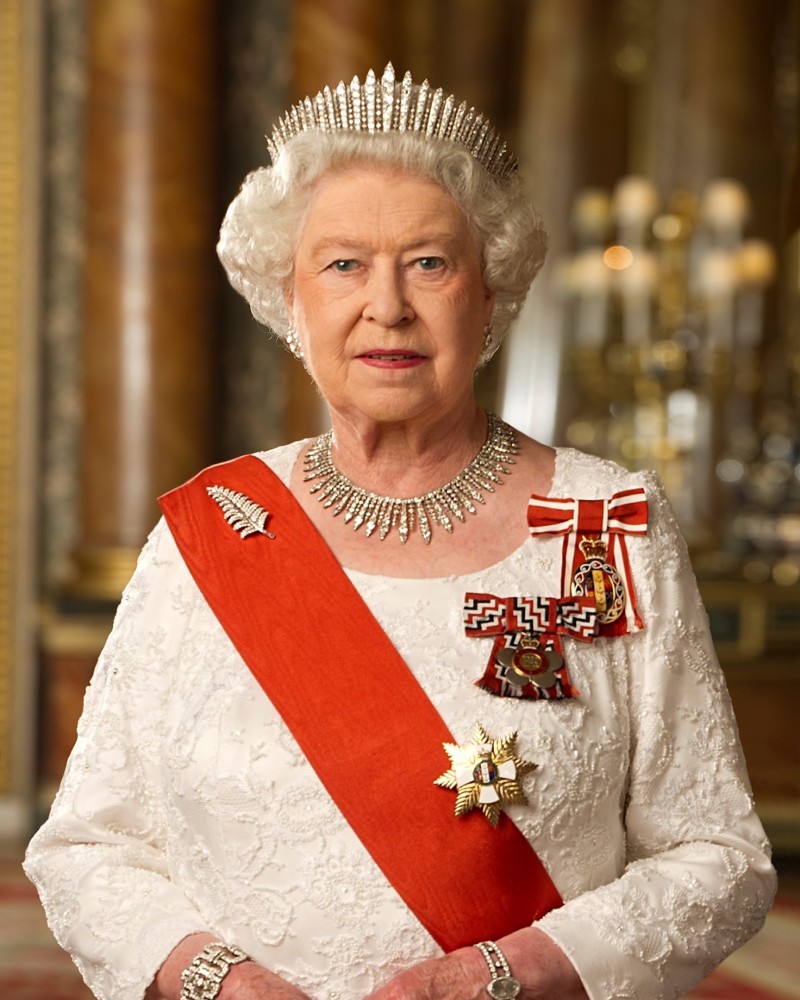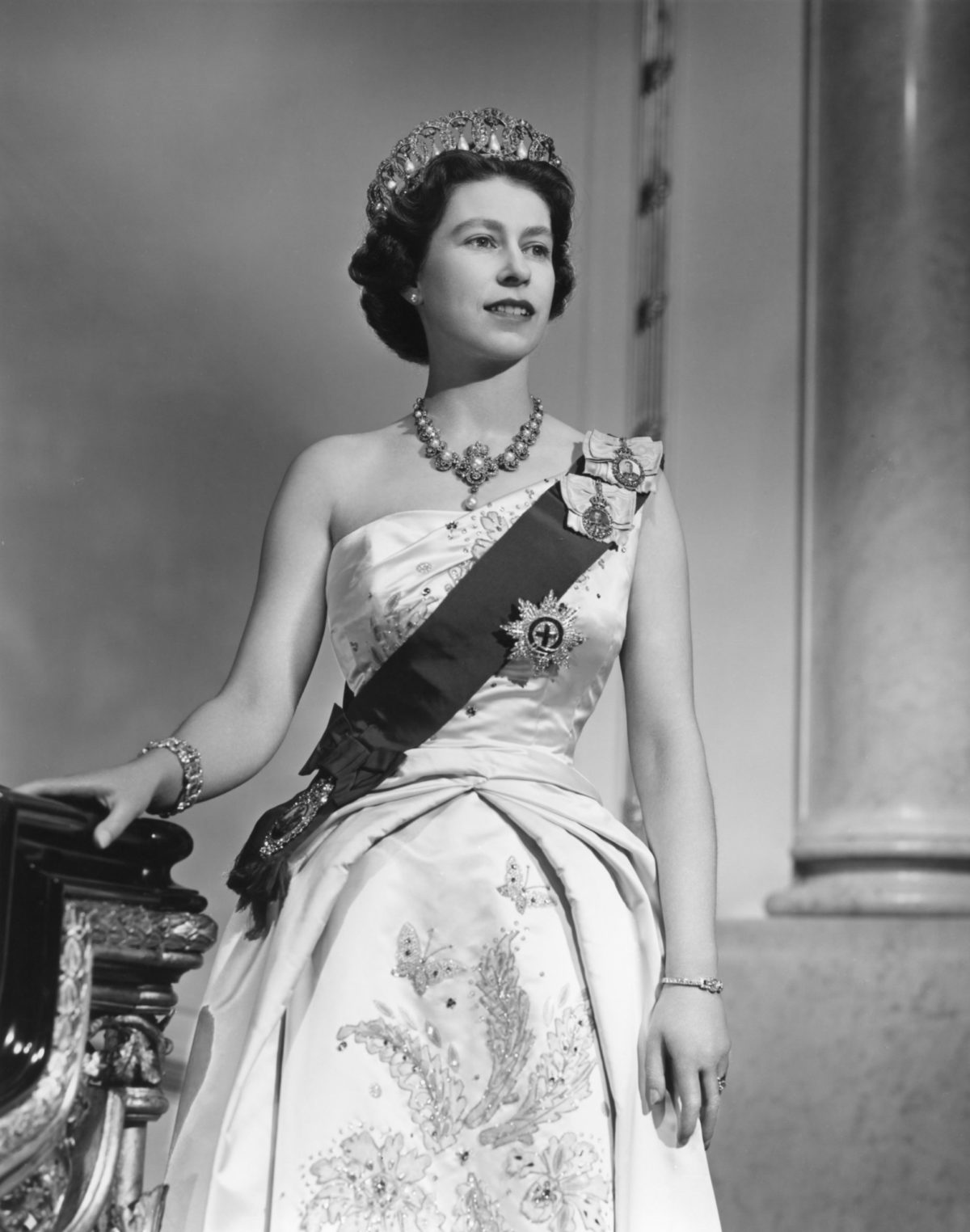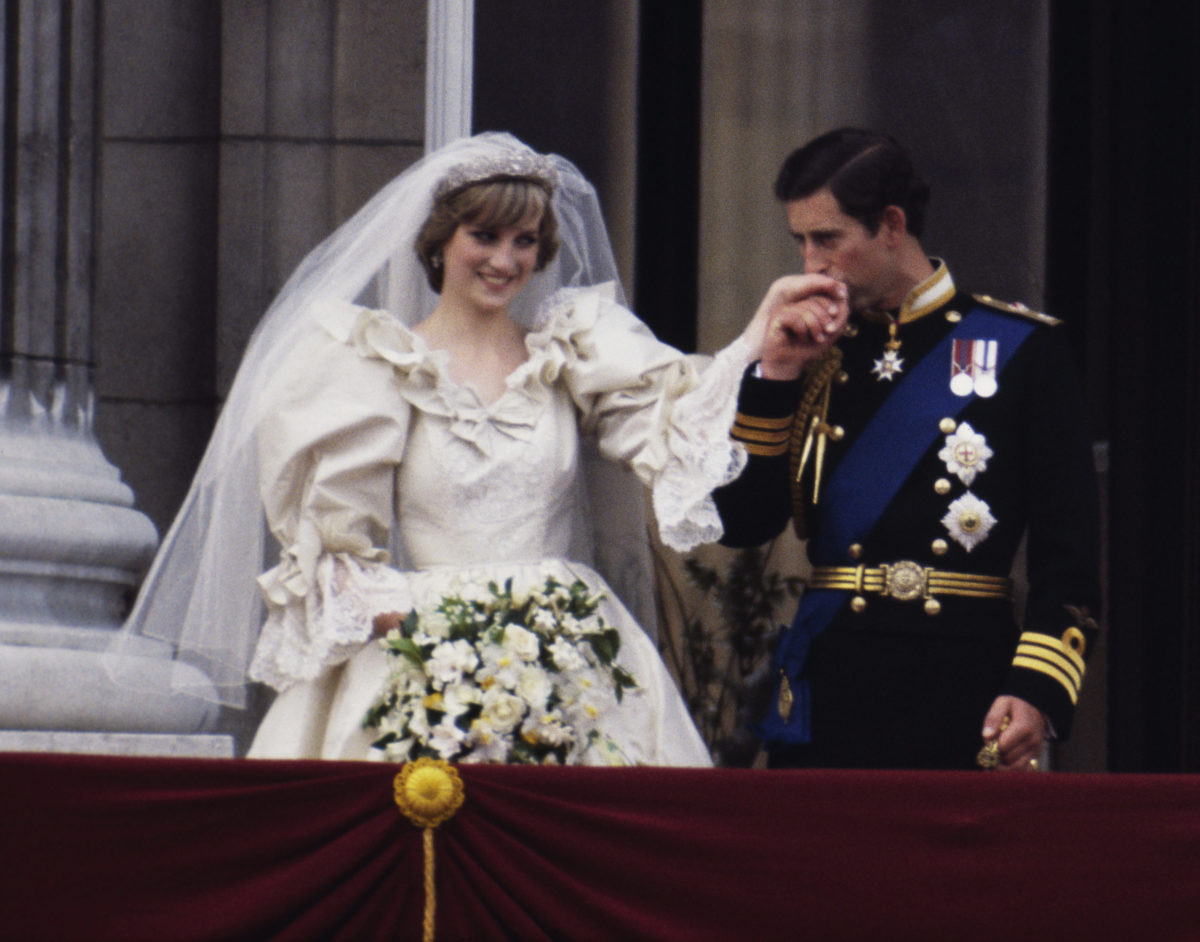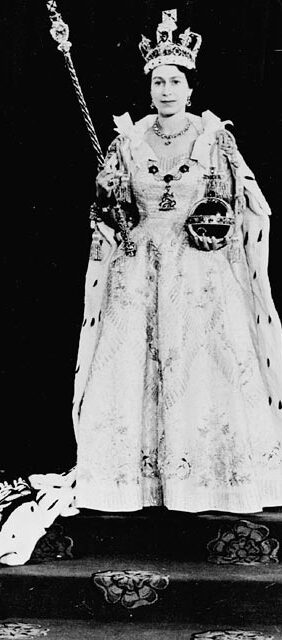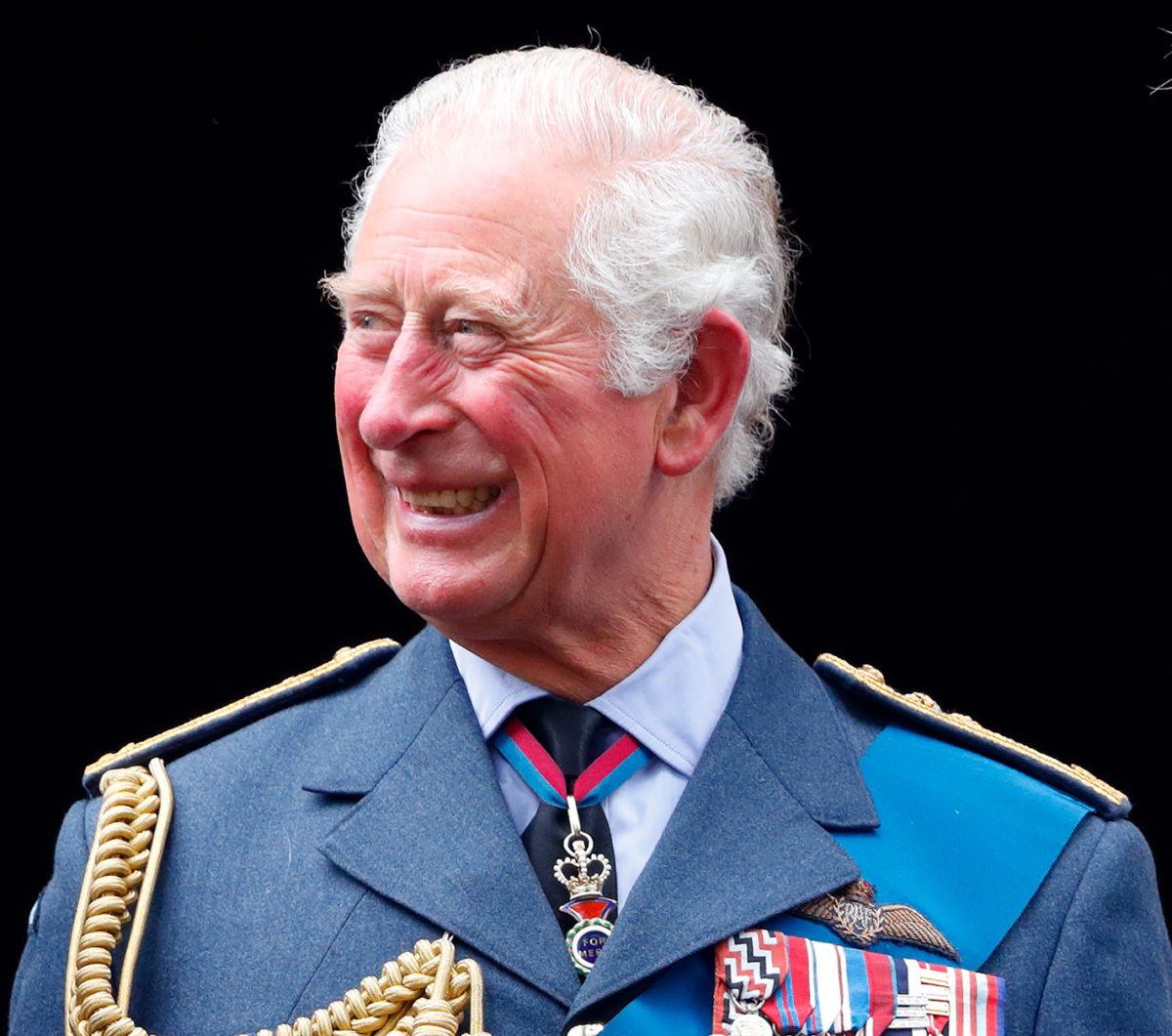Facts, information and articles about Queen Elizabeth II, the monarch of the United Kingdom from 1952 to 2022.
Facts
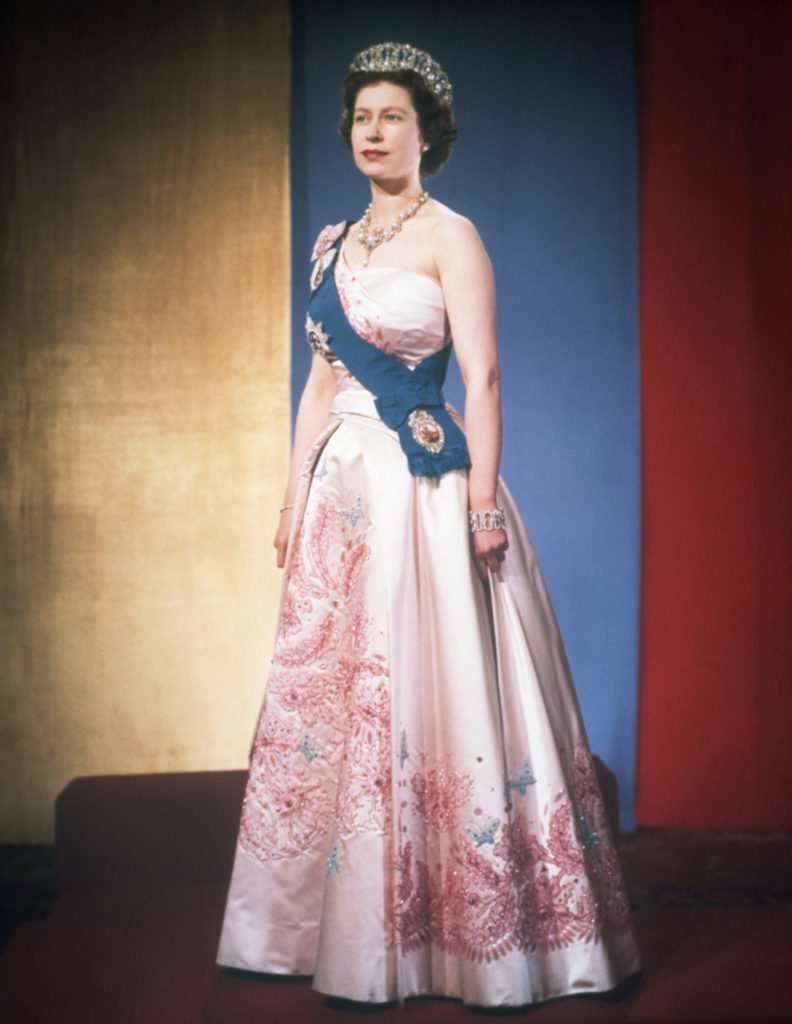
Queen Elizabeth II, or Elizabeth Alexandra Mary of the House of Windsor, was the reigning monarch of the United Kingdom and the head of the Commonwealth. She was the longest-serving monarch in British history, having served for nearly 70 years. She had presided over some of the momentous changes in her country’s history, including the end of the British empire, a number of royal scandals, several wars, and the U.K. joining the European Union and then leaving it after the Brexit referendum.
Her 70-year reign was the longest of any British monarch and the second-longest in the world after King Louis XIV, who took the French throne in 1643 at age 5 and ruled for 72 years.
Born
April 21, 1926, London, England
Died
Sept. 8, 2022, Balmoral, Scotland
Titles
Elizabeth II, by the Grace of God, of the United Kingdom of Great Britain and Northern Ireland and of Her other Realms and Territories Queen, Head of the Commonwealth, Defender of the Faith.
COuntries Where She Was Head of State
Antigua and Barbuda, Australia, The Bahamas, Belize, Canada, Grenada, Jamaica, New Zealand, Papua New Guinea, Saint Kitts and Nevis, Saint Lucia, Saint Vincent and the Grenadines, Solomon Islands, Tuvalu and the United Kingdom.
Successor
King Charles III
Related Stories & Content
Biography
Queen Elizabeth II’s Early Life
Princess Elizabeth of York was born in 1926 during the reign of George V. Her father was the Prince Albert, the Duke of York, the second in line to the throne. Thus Elizabeth was not widely expected to assume the throne — her uncle, Edward, Prince of Wales, was the heir apparent, and her own father showed little inclination for public life. Elizabeth’s mother was Elizabeth Angela Marguerite Bowes-Lyon, the youngest daughter of an earl, who was married to Prince “Bertie” in a love match. Elizabeth’s sister, Margaret, was born in 1930.
In 1936, George V died and Prince Albert became King Edward VIII.
The family’s hopes for a relatively quiet life were dashed later that same year, however, when Edward VIII’s affair with American socialite Wallis Simpson provoked a constitutional crisis. Edward abdicated on Dec. 10, 1936, and Prince Albert became King George VI. Princess Elizabeth became the first in line to the British throne. George VI proved to be a capable leader during World War II, boosting morale and acting a symbol of British determination to defeat Nazi Germany.
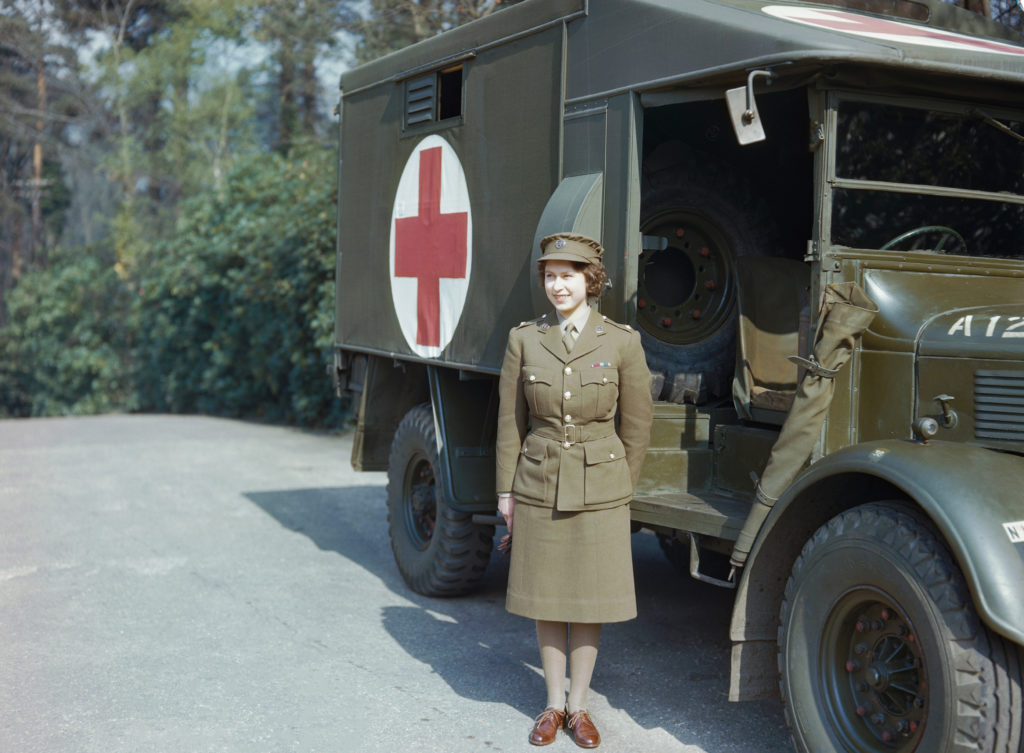
During the war, Princess Elizabeth took part in public events to help the war effort, famously including training as a driver and mechanic for the Auxiliary Territorial Service at age 19. She earned the equivalent of the rank of captain.
On Nov. 20, 1947, Princess Elizabeth married Prince Philip of Greece and Denmark. Their first child, Prince Charles, was born Nov. 14, 1948.
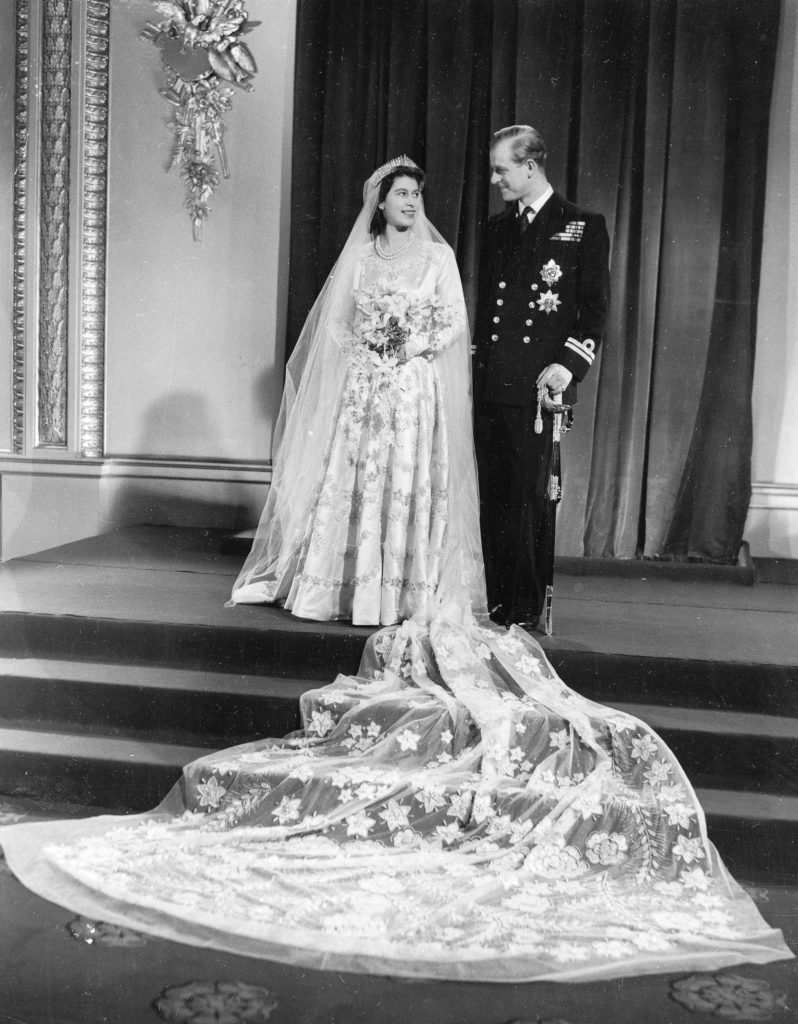
Coronation ANd Early Reign
In February 1952, King George VI died while Elizabeth and Philip were on tour in Kenya. Princess Elizabeth immediately flew back to London. On April 9, 1952, at the suggestion of Prime Minister Winston Churchill and her grandmother, Elizabeth announced that the name of the royal family would be the House of Windsor. She was formally crowned Queen Elizabeth II on June 2, 1953, at Westminster Abbey.
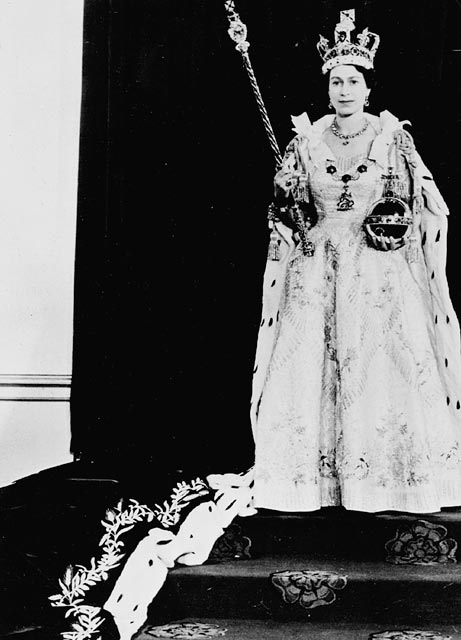
After World War II, the British empire began formally dissolving, and several British colonies left the Commonwealth, and the organization struck “British” from its official name. As part of her Christmas speech in 1953, Queen Elizabeth said she envisioned a new role for the group, “an entirely new conception — built on the highest qualities of the spirit of man: friendship, loyalty and the desire for freedom and peace.”
During the early decades of Queen Elizabeth’s rule, the royal family endured a series of personal scandals as the royals started to become seen as fair targets of media attention. Princess Margaret’s life and failed marriages were frequent tabloid fodder, as was her husband’s infamously blunt tongue. In many ways, Queen Elizabeth II is arguably history’s longest-serving celebrity.
Princess Diana
In July 29, 1981, Prince Charles married Lady Diana Spencer in a lavish wedding that created a worldwide media frenzy. Princess Diana quickly proved a popular royal, but the Princess Di fandom later proved to have consequences for Queen Elizabeth.
In 1982, Prime Minister Margaret Thatcher send British troops to a British island off Argentina in the Falkland Islands War. Elizabeth’s son, Prince Andrew, served as a military helicopter pilot. That same year, an intruder broke into Buckingham Palace and managed to get into the queen’s bedroom, where she kept him busy in conversation until security could apprehend him.
Meanwhile, as reports of animosity between Thatcher and the queen grew, the relationship between Prince Charles and Princess Diana grew strained, providing plenty of fodder for tabloids. Support for the royal family also dipped, with more and more Britons questioning whether it was an obsolete institution.
ANNUS HORRIBILIS
In 1992, which Queen Elizabeth dubbed her “horrible year,” a series of setbacks befell her, including personal tribulations and divorces among her children, a fire at Windsor Castle, and increased oversight over royal finances by the government.
By the end of the year, Prince Charles and Princess Diana had separated, but public scrutiny of their relationship only intensified. Revelations of affairs on both sides emerged, and in 1996, they divorced. The following summer, August 1997, Diana died after a Paris car crash with her boyfriend, Egyptian billionaire scion Dodi Fayed.
What followed was a crisis for the royal family as it and the British government struggled to find a way to deal with the death of a popular figure who held an entirely new place in the history of the royal family — the estranged former spouse of the heir apparent. Queen Elizabeth’s initial response was widely seen as cold and insensitive, but she managed to assuage public anger with an unprecedented live television address about her former daughter-in-law.
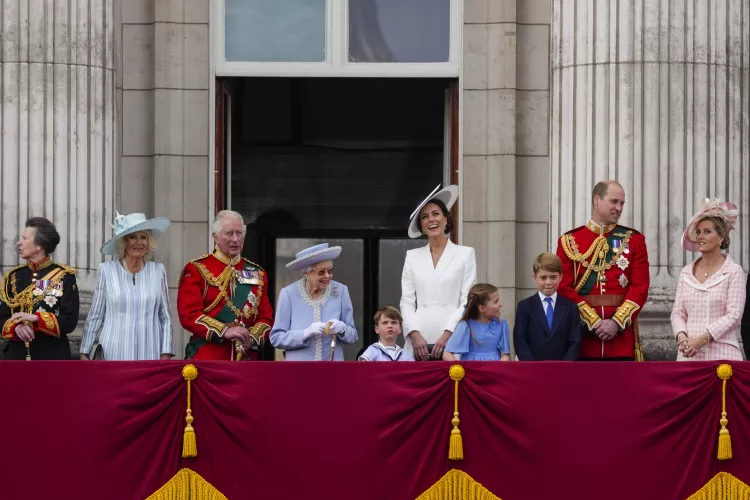
21st Century Queen
Enjoying revived popularity, the queen celebrated her Golden Jubilee, the 50th anniversary of her reign, in 2002. In 2007, she became the country’s longest-serving monarch, surpassing Queen Victoria.
Starting in 2013, increasing health issues meant she could no longer attend many official events, including as head of the Commonwealth, and during the COVID-19 pandemic, she moved to Windsor Castle and limited her contact with people to protect her health. On April 9, 2021, Prince Philip died, and the queen sat alone at his funeral service because of COVID precautions
Queen Elizabeth II’s Platinum Jubilee officially started in February 2022, but she tested positive for the coronavirus later that month and was forced to isolate. She recovered but began making even fewer public appearances since.
Marriages of William and Harry
Further turning a global spotlight on the British monarchy, Queen Elizabeth II’s grandsons Prince William and Prince Harry stepped outside of tradition when choosing their brides. In April 2011, Prince William, the elder son of Charles and Diana, married Catherine Middleton, who was a commoner. Despite her less-pedigreed family history, however, Kate, now the duchess of Cambridge, did come from wealth. Her parents were self-made millionaire business owners.
William’s younger brother, Prince Harry, went a step further in breaking the mold. In May 2018, he married American actress Meghan Markle, who starred in the legal drama series “Suits.” Meghan, now duchess of Sussex, was also previously divorced and part Black, both being unusual in the royal family.
In 2020, Meghan and Harry spurred controversy by stepping down as working members of the royal family and moving back to America. The following year, Meghan gave a bombshell interview to Oprah Winfrey in which she said she felt mistreated and subjected to racism by the royal family.
Waning Health and Death
Despite Markle’s claims, public support for the British monarchy remained strong. Prince William spoke out in defense of his family, and asserted that its members were “very much not racist.” Queen Elizabeth II remained an enduringly popular figure.
In early September of 2022, it was announced that the queen was under medical supervision at Balmoral Castle, and that her children and Prince William, Prince Harry and Camilla, Duchess of Cornwall (Prince Charles’ second wife) had traveled to Scotland to be with her. Queen Elizabeth II died on Sept. 8, 2022, in Balmoral Castle. Upon her death, King Charles III ascended to the throne.
historynet magazines
Our 9 best-selling history titles feature in-depth storytelling and iconic imagery to engage and inform on the people, the wars, and the events that shaped America and the world.


